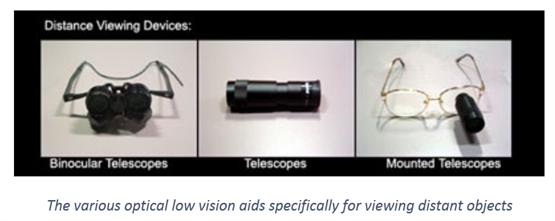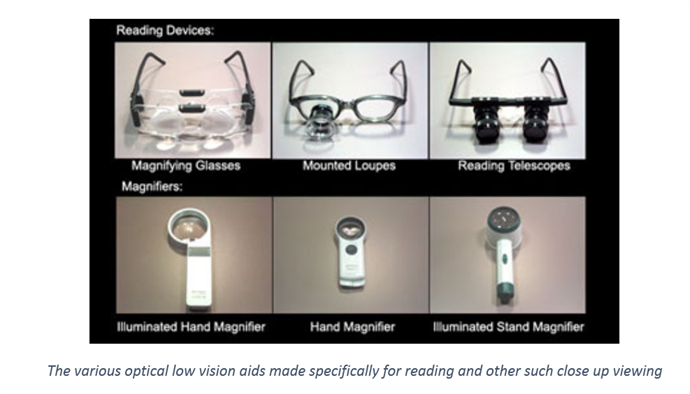We know that the eyes are essential sensory organs that help to see the world. The vision of the eye is altered due to various reasons like aging, infections, cataract, injury, shape of the eye, placement of retina, the focus of light, and many more. These reasons impact the eyes and cause visual impairments. Let us learn more about the use of optical low vision aids in vision correction.
Table of Contents:
- What is Visual Impairment
- Vision Problems
- Solution to the Vision Impairment
- Low Vision Aids – Optical Aids
- Low Vision Devices For Viewing Distant Objects
- Low Vision Optical Devices
- Frequently Asked Questions – FAQs
What is Visual Impairment?
Visual (Vision) Impairment is a reduction in vision, usually associated with age that cannot be corrected by prescription glasses, contact lenses, medicine or even surgery. It can range from low to severe. Visual impairment is a huge problem affecting a lot of people worldwide causing normal daily activities such as walking, reading or driving to become impossible or very challenging. In this article, let us know how optical low vision aids can be used to rectify and correct some of the vision defects.
Vision Problems:
Refractive errors are vision problems that happen when the shape of the eye keeps you from focusing well and it is the major cause of vision loss around the world. A clouding or loss of transparency of the lens in the human eye as a result of tissue breakdown and protein clumping. There are many causes of cataracts, including ageing, cortisone medication, trauma, diabetes, and other diseases. Cataracts affect most people during their old age. Symptoms include double or blurred vision and sensitivity to light and glare.
Solution to the Vision Impairment
- Thanks to technology, many low vision aids such as magnifying glasses, telescopes etc. helps the visually impaired people to live a normal life.
- In fact, blind people are now able to read and write. It is a system of writing for the blind that uses characters made up of raised dots which are called as the Braille. Knowledge is the key to living with low vision or blindness. People with low vision can enhance their quality of life by learning which optical and non-optical aids can help them, and by integrating strategies for dealing with the visual impairment into daily life. The low vision aids are classified into two types; Optical Aids and Non-Optical Aids.
Click on the video below to know how spectacles work.

Low Vision Aids – Optical Aids
Optical aids for low vision can range from reading glasses, magnifiers to small telescopes depending on the severity of visual impairment. Such devices differ from the reading glasses or the magnifying glasses that we are familiar with. Low vision devices are never all-purpose devices and are built with a very specific use in mind. We should think of the low vision optical aids as specific where one device may be used for reading a mail, another for watching movies, and yet another for seeing menus at a restaurant.
Optical vision aids are classified as:
Low Vision Devices For Viewing Distant Objects
The optical low vision aids are mostly powerful lenses that magnify objects so that people with visual impairment can see them clearly. These lenses may come in the form of spectacles for reading books or in the form of a telescope for viewing faraway objects. Sometimes such lenses are also mounted on the spectacles to give the device a degree of versatility.
Low vision optical devices
They make it easier to use one’s existing vision for specific tasks, like knitting or watching a football game. Unfortunately, low vision aids do not bring back the vision that has already been lost, but they will maximize one’s remaining vision and help one to enjoy life as a regular person. There are hand magnifiers, stand magnifiers, pocket magnifiers, and they come in all sorts of shapes. There are magnifiers that look like mini-telescopes and some that look like glasses. Some can be worn around the neck and some come attached to a desk lamp. Some have built-in lights. Also, the lenses used in the devices can also be altered to change the strength of the lenses as per the requirements of the visually impaired person. Practice is the next important step. Just as an amputee must learn to walk with his new prosthesis, a person with low vision must practice using adaptive aids until they become second nature.
Stay tuned with BYJU’S to learn more about Optical Low Vision Aids, lenses in optics and much more.




Comments